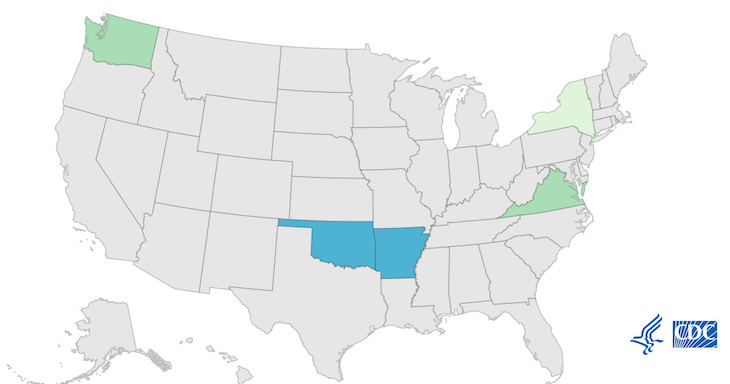The U.S. Food and Drug Administration (FDA) has joined the investigation into the new E. coli O157:H7 outbreak. The agency is collaborating with the Centers for Disease Control and Prevention (CDC).CDC, state partners and the U.S. Department of Agriculture’s Foods Safety and Inspection Service (USDA FSIS) in the quest to discover the food source of the outbreak which is causing severe infections. Of the 16 people sickened, nine have been hospitalized, three have developed hemolytic uremic syndrome (HUS), a form of kidney failure associated with E. coli infections, and one person has died.
While health officials don’t yet know the food source, they do know, thanks to whole genome sequencing (WGS), that the outbreak strain is the same one linked to the 2018 outbreak linked to romaine lettuce grown in Yuma, AZ that killed five people, and a deadly 2020 E. coli outbreak.
Because USDA FSIS regulates meat and poultry and the FDA regulates everything else, usually just one of them works on an outbreak with the CDC. Recent outbreaks where all three of them were involved include two outbreaks where prepackaged salad with cooked chicken was identified as the food source.
Today, Food Poisoning Bulletin looked at all of the multistate E.coli O157:H7 outbreaks from 2006- 2020 to see if they offered a clue as to what the food source of the new outbreak may be. At this point, the outbreak includes 16 people from five states who range in age 10 to 95 years old. They reported the onset of symptoms of an E. coli infection, which include abdominal cramps and diarrhea that can be bloody, on dates ranging from December 23, 2020, to January 7. 2021. The number of cases from each state is: Arkansas (6), New York (1), Oklahoma (5), Virginia (2), and Washington (2). The fatality was reported in Washington.
Because these infections are so severe, the CDC urges anyone with the following symptoms to seek immediate medical attention:
- Diarrhea and a fever higher than 102°F.
- Bloody diarrhea
- Diarrhea for more than three days that is not improving
- Vomiting so much that you cannot keep liquids down
- Signs of dehydration, such as dry mouth or throat, feeling dizzy when you stand up, not urinating (peeing) much.
The CDC also asks anyone who has these symptoms to help solve the outbreak by doing the following:
- Write down what you ate in the week before you got sick.
- Report your illness to your local or state health department.
- Answer public health officials’ questions about your illness.






